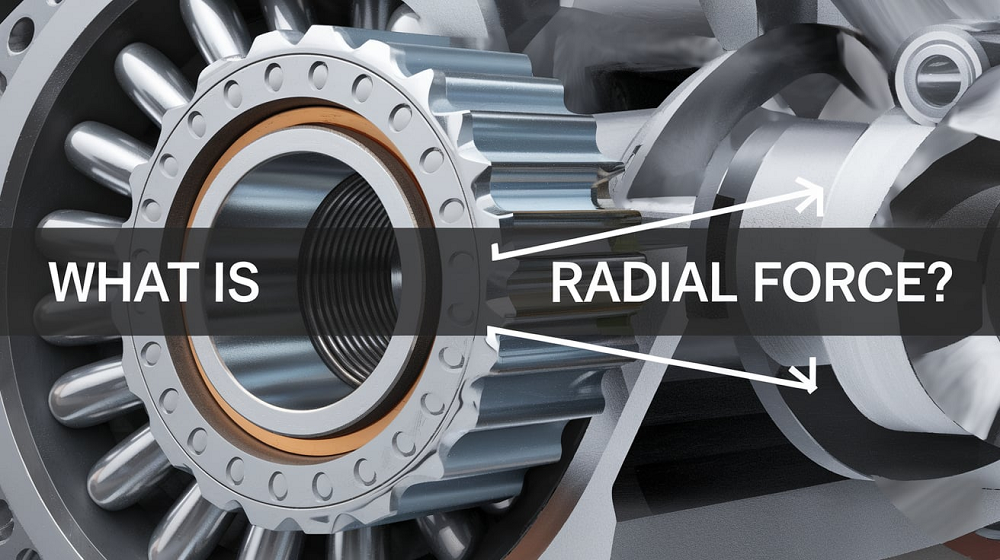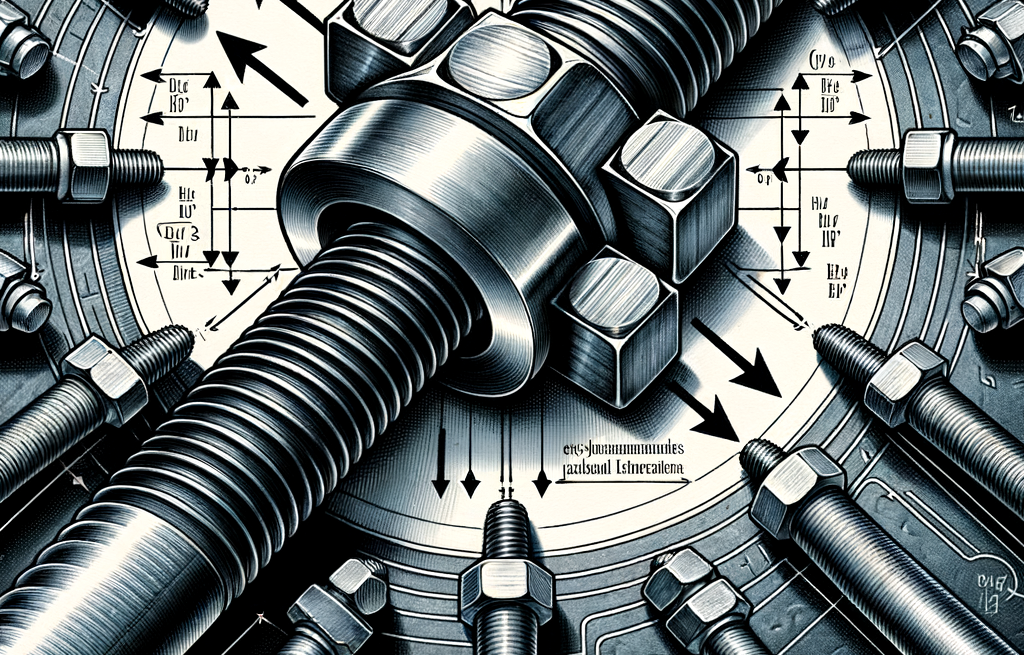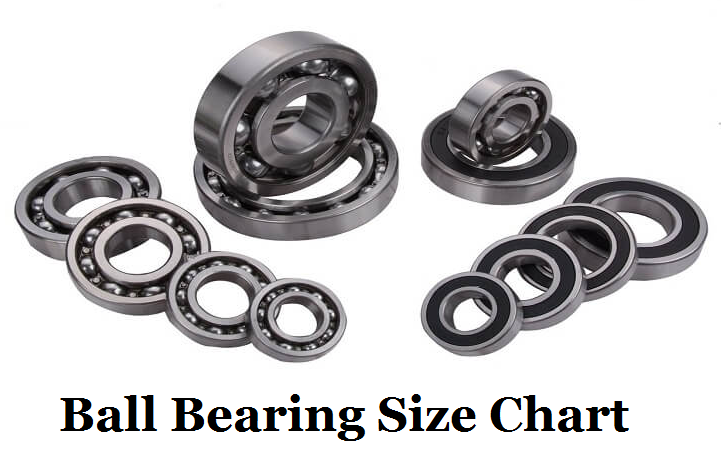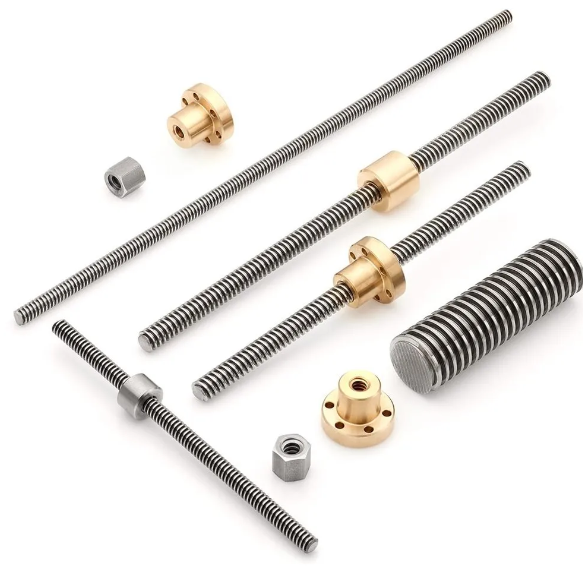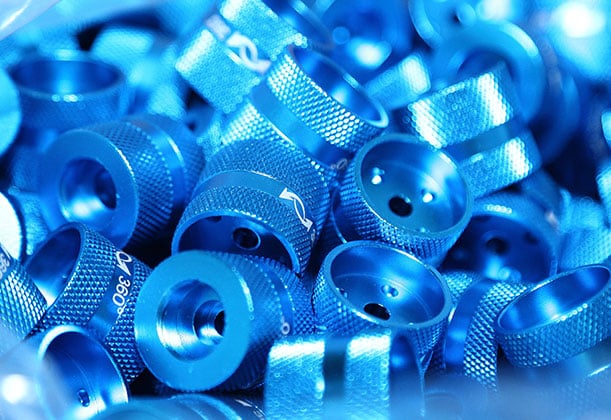Before determining the best bearing for your application, it is necessary to identify the bearing type and characteristics. This guide will dive into different types of bearings and their uses, along with the definition, function, as well as classification of bearings & bushings vs bearings.
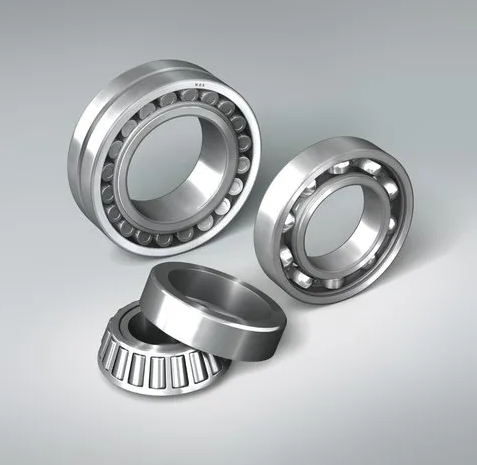
What Is Bearing and Its Functions?
A bearing is a crucial component in various mechanical systems, used to limit relative motion and reduce friction between moving parts. Bearings can support the shaft and maintain its correct position, while also being able to withstand the force acting on the shaft and transmit it out, which also helps achieve free rotation of the shaft with minimal friction.
Difference Between Bushing and Bearing
A bushing is regarded as a type of bearing, but a bearing is not equal to a bushing. Understanding the differences between bushings and bearings to choose the better one for your applications.
– Design & Shape. Bushings typically have a simple cylindrical shape, with a smooth inner and outer surface. Bearings have a more complex structure with inner and outer raceways containing rolling elements like balls or rollers.
– Friction. Bushings typically have a higher friction coefficient compared to bearings.
– Applications. Bushings are best for heavy loads at moderate speeds up to around 1200 rpm. Bearings can handle medium to high loads and speeds.
– Production. Bushings are usually machined from solid stock, making production relatively simple. Bearings require highly precise automated manufacturing to guarantee tight tolerances.
– Materials. Common bushing materials include self-lubricating bronze and corrosion-resistant brass. Bearings often use durable steel alloys and heat-resistant ceramics.
– Maintenance. Bushings require minimal maintenance and usually no lubrication. Some bearings need periodic lubrication depending on the operating conditions and environment.
– Performance. Due to their rolling elements, bearings experience less friction and provide smoother operation than bushings, especially at higher loads and velocities.
– Cost. Bushings tend to be more cost-effective than bearings due to simpler manufacturing techniques.
Bushing vs Bearing, Which is Better to Choose?
1) Load Capacity:
Bushings are generally suitable for low to moderate load applications, while bearings can handle higher loads. So, in a small electric motor for a household appliance, a bushing might be sufficient. However, for a large industrial conveyor system carrying heavy materials, bearings would be more appropriate.
2) Speed:
Bearings excel in high-speed applications because of low friction and high stiffness. Bushings are better suited for lower-speed operations. For a high-speed computer fan, bearings would be the preferred choice. In contrast, for a slowly rotating display stand, bushings could suffice.
3) Precision:
When high precision is required, bearings are the go-to option. They’re commonly used in applications demanding tight tolerances. In a CNC machine tool spindle where precision is crucial, bearings would be necessary. For a simple door hinge, where exact positioning is less critical, a bushing could work well.
4) Lubrication Requirements:
Some bushings, particularly those made of materials like nylon or PTFE, can operate without additional lubrication. This self-lubricating property can be advantageous in certain applications. In food processing equipment where external lubricants must be avoided, self-lubricating bushings could be ideal. For a constantly rotating shaft in a heavy machinery application, bearings with proper lubrication systems would be more suitable.
5) Space Constraints:
Bushings often require less space than bearings, which can be beneficial in compact designs. In a small handheld device like an electric toothbrush, where space is at a premium, bushings might be preferred. For a large wind turbine’s main shaft, where there’s ample space and high loads are involved, bearings would be the better option.
6) Cost and Maintenance:
Bushings are typically less expensive upfront but may require more frequent replacement. Bearings often have a higher initial cost but offer longer service life and reduced maintenance needs. For a mass-produced toy with a short expected lifespan, bushings might be more cost-effective. In a critical industrial machine where downtime is expensive, the longer-lasting bearings could be more economical in the long run.
7) Environmental Factors:
In a marine application exposed to saltwater, specialized bearings with proper sealing would be necessary. For a simple pivot point in a dry, indoor environment, a basic bushing might suffice.
Classification of Bearings
Bearings can be classified into the following types according to different basis. Here is a list of types of bearings with images.
1)By type of friction
- Sliding contact bearing (plain, journal, or sleeve bearing)
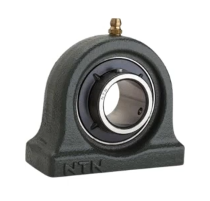
- Rolling contact bearing (anti-friction bearing)
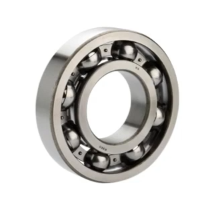
2)By direction of force acting upon them
- Radial bearing
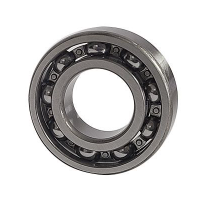
- Thrust bearing
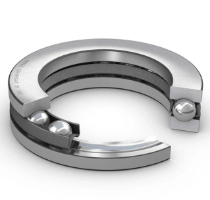
3)By type of rolling elements
- Deep groove ball bearing
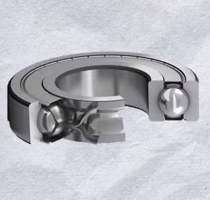
- Cylindrical roller bearing
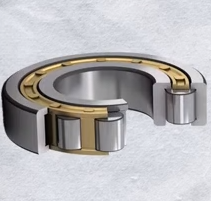
- Angular contact bearing
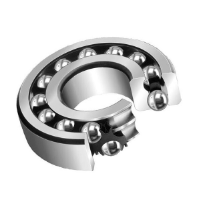
- Self-aligning bearing
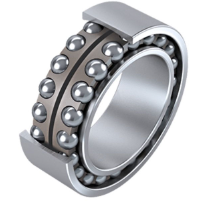
- Spherical roller bearing
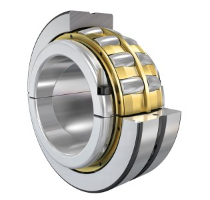
- Taper roller bearing
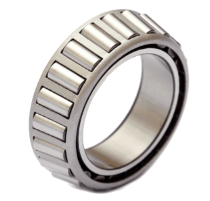
- Thrust ball bearing
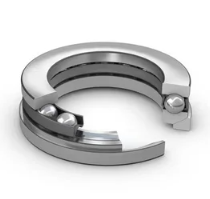
- Needle roller bearing
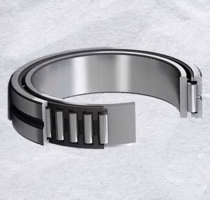
4)By type of material
- Steel bearing
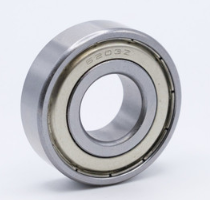
- Ceramic bearing
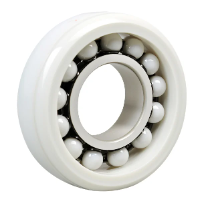
- Plastic bearing
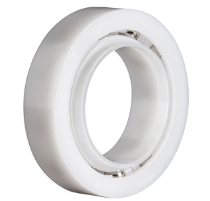
- Hybrid bearing
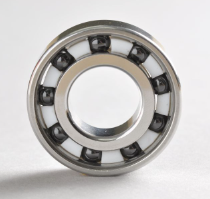
Types of Bearings and Their Applications (Uses) – How Many Types of Bearing Are There
How many types of bearings are there depends on the classification methods, there are many special bearings that may be not included here, we’ll introduce the main bearing types and names.
1. Sliding Contact Bearing (plain, journal, or sleeve bearing):
– Definition: Sliding contact bearings, also known as plain, journal, or sleeve bearings, are designed to support a rotating shaft while maintaining sliding contact between the bearing surface and the shaft. Types of sliding contact bearings include solid bearing, bush bearing, self-aligning bush bearing, foot bearing, and pedestal bearing.
– Application: They are commonly used in low-speed and high-load applications where precise alignment is not critical, such as in engines, turbines, and heavy machinery.
2. Rolling Contact Bearing (anti-friction bearing):
– Definition: Rolling contact bearings, also known as anti-friction bearings, utilize rolling elements (balls or rollers) between the inner and outer raceways to reduce friction and support axial and radial loads, significantly reducing friction compared to sliding contact bearings. The rolling contact bearing can be divided into ball bearings (deep groove bearings, filling notch ball bearings, and angular contact bearings) and roller bearings (cylindrical bearings, spherical bearings, taper bearings, and needle bearings).
– Application: They are widely used in various applications, including automotive, aerospace, industrial machinery, and appliances, where high rotational speeds, low friction, and durability are essential.
3. Radial Bearing:
– Definition: Radial bearings are designed to support radial loads, which are perpendicular to the axis of rotation. These bearings distribute the load evenly along the circumference of the bearing, allowing the shaft to rotate smoothly.
– Application: They are commonly used in applications where the primary load is radial, such as in electric motors, pumps, and fans.
4. Thrust Bearing:
– Definition: Thrust bearings are designed to support axial loads, which are parallel to the axis of rotation. These bearings are specifically engineered to handle thrust forces by providing support and allowing smooth axial movement.
– Application: They are used in applications where there is a need to support axial loads, such as in automotive transmissions, gearboxes, and thrust reversers in aircraft engines.
5. Deep Groove Ball Bearing:
– Definition: Deep groove ball bearings are the most widely used rolling bearings, have deep raceway grooves, enabling them to support both radial and axial loads in both directions. These bearings accommodate high radial and axial loads and operate at high speeds due to their low frictional torque.
– Application: They are commonly used in applications requiring high-speed operation and moderate radial and axial loads, such as electric motors, pumps, and automotive components.
6. Cylindrical Roller Bearing:
– Definition: Cylindrical roller bearings utilize cylindrical rollers to support radial loads with high radial capacity and moderate thrust capacity.
– Application: They are used in various industries, including construction machinery, rolling mills, and gearboxes.
7. Angular Contact Bearing:
– Definition: Angular contact bearings have raceways that are inclined to the bearing axis, allowing them to support combined radial and axial loads.
– Application: They are commonly used in applications requiring high-speed operation and the ability to withstand combined radial and axial loads, such as machine tool spindles and automotive wheels.
8. Self-Aligning Bearing:
– Definition: Self-aligning bearings, also called spherical roller bearings, have two rows of balls and a common spherical raceway in the outer ring, allowing them to compensate for misalignment between the shaft and housing.
– Application: They are used in applications where shaft misalignment is common, such as conveyor systems, agricultural machinery, and printing presses.
9. Spherical roller bearing:
– Definition: Feature barrel-shaped rollers arranged in two rows and a spherical outer ring raceway, such a design ensures that the barrel-shaped rollers, guided by the inclined raceways of the inner ring, can adjust, or realign themselves freely along the concave outer ring raceway. They can accommodate heavy radial loads, and misalignment between shaft and housing, and have exceptional resistance to shock and vibration.
– Applications: railway equipment, construction machinery, oil and gas industry, and wind turbines.
10. Taper Roller Bearing:
– Definition: Taper roller bearings have tapered raceways and rollers arranged in such a way that the rollers converge at a common point on the bearing axis, providing high radial and axial load-carrying capacity.
– Application: They are used in applications requiring high radial and axial load capacity, such as automotive wheel hubs, gearboxes, and heavy machinery.
11. Thrust Ball Bearing:
– Definition: Thrust ball bearings consist of two washers with raceways and a cage with balls, allowing them to support axial loads in one direction.
– Application: They are commonly used in applications requiring axial load support, such as automotive steering systems, machine tool spindles, and thrust reversers in aircraft engines.
12. Needle Roller Bearing:
– Definition: Needle roller bearings utilize cylindrical rollers with a small diameter-to-length ratio, providing high radial load-carrying capacity in a limited space. No retainer or cage is needed.
– Application: They are often used in heavy-duty diesel engines, where heavy loads are to be carried with an oscillatory motion, and auto parts like rocker arm pivots and transmissions.
How to Choose the Right Bearing Type?
The selection of bearing type for a specific application involves various factors.
– Operating Conditions: the speed of rotation, the direction and magnitude of the load, the operating temperature range, and potential exposure to contaminants, moisture, or corrosive substances.
– Load Requirements: the magnitude and direction of the applied load, as well as dynamic and static load ratings provided by the manufacturer.
– Installation Constraints: the available space for mounting the bearing, shaft, and housing tolerances, and accessibility for maintenance and replacement.
– Cost: evaluate the initial cost of the bearing along with the total cost of ownership, including maintenance, replacement, and downtime costs.
– Rotating Speed: ball bearings are better choices for high rotational speeds, rather than roller bearings.
– Lubrication: determine the appropriate lubrication method (grease, oil, or dry lubricant) based on speed, temperature, and operating environment.
– Environment: includes temperature extremes, humidity, vibration, and shock loads.


